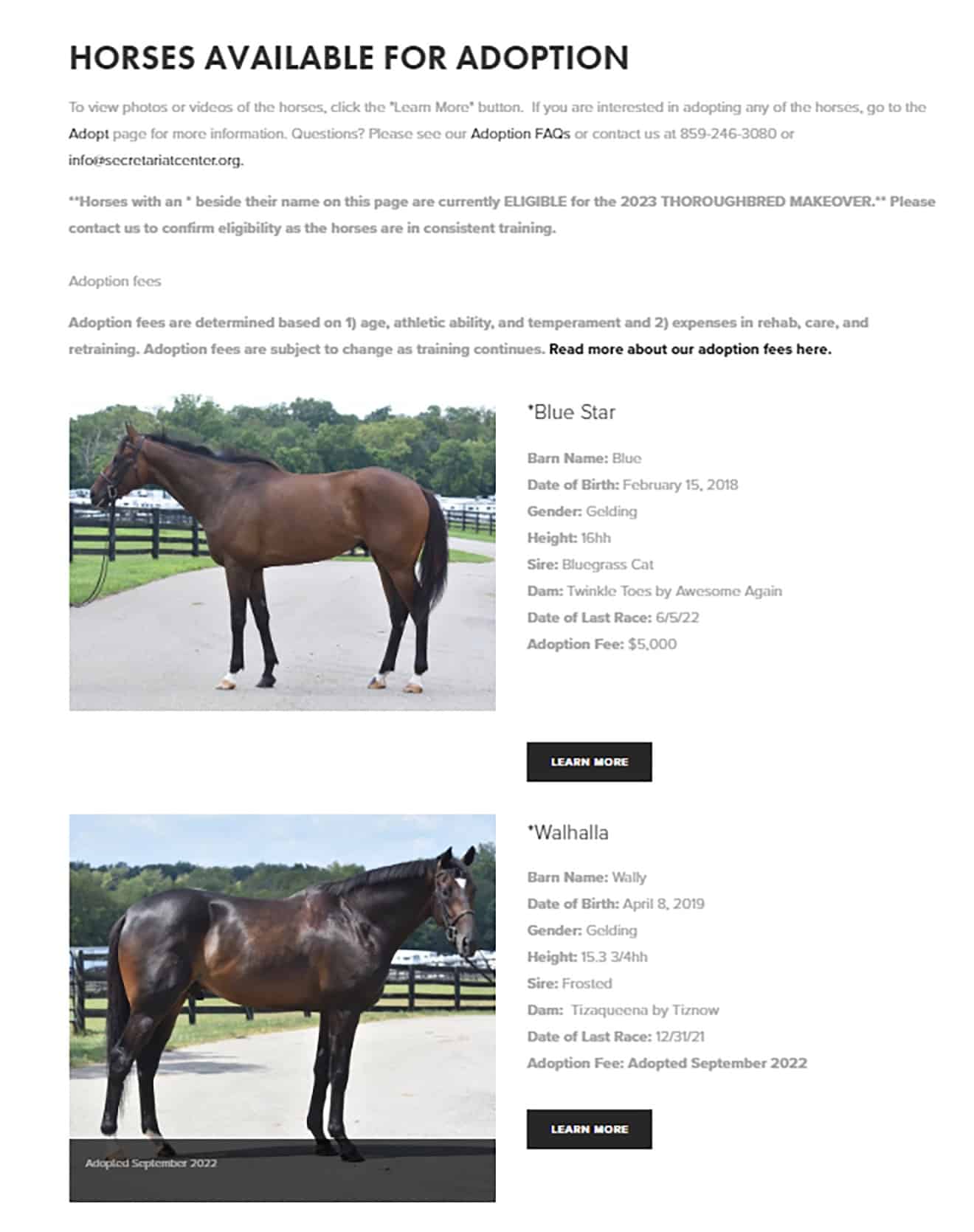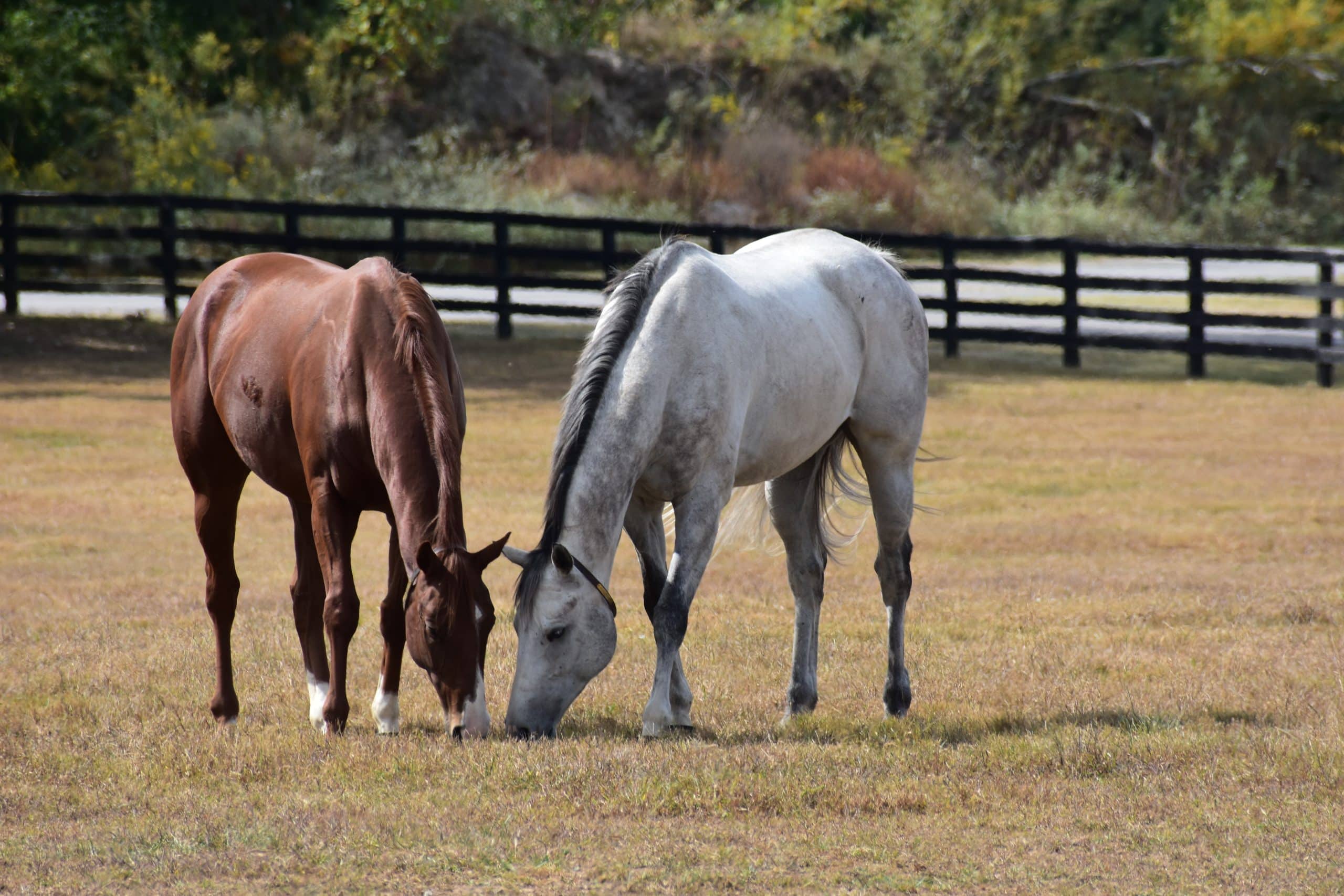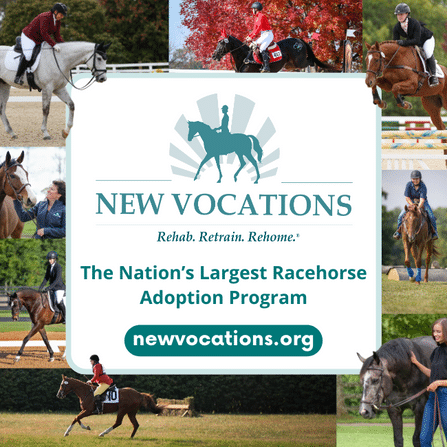With the world of horse sales dominated by social media, OTTB shoppers have what can seem like an endless stream of available horses to browse online, and offerings can change daily or even hourly. Prices for off-track Thoroughbreds have not only increased with inflation like many other commodities but also with heightened demand due to incentive programs, the Thoroughbred Makeover and a general recognition of their value as athletes and pleasure horses. When making a significant investment in an OTTB, it’s important to know how to “vet” the program or seller, as well as the horse itself. Here’s what you need to know about purchasing from aftercare programs and resale businesses.
Nonprofit Organizations
Many well-known aftercare groups are nonprofit organizations. Nonprofits are legal entities that operate for a public or collective benefit and rely heavily on donations. Any funds raised over and above expenses must be used to serve the organization’s mission, rather than be distributed to shareholders. Nonprofits can apply to become tax-exempt through the IRS as 501(c)(3) entities. This can be extremely helpful for OTTB charities, because having tax-exempt status allows donors to write off monetary contributions — and even donated horses — on their income taxes and exempts the organization from paying taxes itself.
Examples of Thoroughbred aftercare organizations recognized as nonprofits include CANTER (Communication Alliance to Network Thoroughbred Ex-Racehorses) USA, New Vocations, ReRun and The Secretariat Center. These and other groups offer listing services to connect racing trainers and owners with potential buyers and/or accept horses on a donation basis to eventually be adopted out to new owners.
While there is no formal credential or requirement for Thoroughbred aftercare nonprofits, the Thoroughbred Aftercare Alliance (TAA) offers a national accreditation. The TAA has established a code of standards in the areas of operations, education, horse health management, facilities standards and services and adoption policies and protocols. TAA-accredited nonprofits must complete an extensive application, meet the organization’s code of standards and agree to scheduled and random site inspections. The code of standards covers everything from record-keeping and accounting practices to veterinary care, feeding, shelter for horses and screening of potential adopters. Organizations are initially reaccredited every other year to ensure they continue to meet TAA’s requirements.
Not all nonprofits are eligible for TAA accreditation, but that does not mean they are poorly run — some are simply too small to have dedicated facilities for aftercare, and others use a network of facilities or fosters to ensure their horses get good care. Whether the group you work with has TAA accreditation, tax-exempt status or none of the above, anytime you are looking to adopt a Thoroughbred, it is essential to know what questions to ask so you don’t encounter any surprises about the horse or the organization’s policies.

Most nonprofits have online listings of adoptable horses with details about their physical traits, personalities and soundness.
For-Profit Businesses
Other businesses are structured as for-profit ventures that take commissions — predetermined percentages of each horse’s sale price — from selling horses directly off the track, sourcing horses for buyers or purchasing horses specifically for resale. Depending on the business model, the agent or seller might have varying degrees of knowledge about the horses they are listing for sale or reselling.
Individuals acting as agents for the horses’ connections also offer listing services. These agents typically collect a commission and sell these horses directly from the track, and the information available to buyers usually comes from the horses’ trainers. This might include an estimate of height, a few details about the horse’s personality and obvious health or soundness conditions. Usually, these listings are accompanied by a few photos and basic videos of the horse walking and jogging in hand. Depending on the agent’s or lister’s experience, they might also include an evaluation of each horse’s gait and aptitude for certain disciplines.
Resellers purchase horses off the track to evaluate, restart and sell at a profit. These sellers usually take time to evaluate the horse’s physical condition, gaits, attitude and talent. They might watch the horse free longe, put it through a jump chute and restart it under tack with a rider. These sellers are looking to get a return on their investment and are likely to know quite a bit more about the horses they are selling than agents listing horses still on the backside of a track.
Which Buying Experience Is Right for You?
As a buyer, you need to consider several important factors when deciding where to look for your next OTTB. The most important are your experience level, your budget and your intended purpose for the horse.
Professionals with experience evaluating Thoroughbreds off a quick jog video and conformation shots can have great success choosing a horse from a backside listing ad and, consequently, less experienced buyers should enlist the help of such a professional when shopping off these ads. The price points for backside listings can be anywhere from free (horses needing time off for an injury or with significant physical limitations) to the low five figures. Pay attention to who you need to call about the horse — it is most often the trainer, and they might or might not be familiar with the discipline for which you are purchasing. It will be up to you to ensure the horse has the soundness and personality you desire. A major disadvantage is not being able to ride or even longe the horse prior to purchase, though occasionally you can arrange to watch the horse gallop with an exercise rider.
Jodi Ladner, who operates Gateway Off-Track Thoroughbreds out of Fairmount Park Racetrack, in Southern Illinois, has listed 75 horses since July 2022 and sold 52 of them. “Sales prices range from $1,500 to $7,500, depending on the horse, its conformation, height, personality, age, vices, etc.,” she says. “Most horses are in the $3,000 to $4,000 range, and most owners/trainers are open to offers. All prices are set by the owner or trainer.”
She provides many services to her listing clients, including taking professional photos and jog videos of each horse, weeding out tire-kickers, managing bills of sale, communicating with buyers about what horses might fit their needs, arranging prepurchase exams for buyers and sometimes even streaming the exams for them to observe. She charges a 10% commission on horses she lists. Ladner says the best buyer for her business is “someone who is ready to purchase, knows their budget, has an idea of the temperament they’re looking for and knows the discipline that they’ll be using the horse for.”
Advantages of going through a listing service such as hers are the price point will be lower most of the time, and buyers get to restart horses themselves.
Nonprofits have historically been important stopgaps for retiring Thoroughbreds. At one time, trainers and owners were happy to donate many of their retiring horses to charities so they could find new careers. With the continually increasing value of OTTBs, donations of completely sound horses have slowed, as trainers and owners understand their retiring racehorses can be sold directly to interested buyers. Instead, many nonprofits now find themselves with a larger proportion of horses that need time off, surgery and/or rehabilitation. When adopting from a nonprofit, it is very important to get all available medical records and any information from the horse’s intake that might be pertinent to your needs. Veterinarians can treat and rehabilitate many injuries successfully, so with proper care these OTTBs often get adopted without limitations.
The benefit to going through a nonprofit when considering a horse with a previous injury is more information about the horse and his situation is likely available to the adopter, because any reputable nonprofit works closely with a veterinarian. Although prices vary by region, many of these rehabilitated horses can be adopted for a relatively low fee, ranging from a few hundred dollars to low/mid-four figures. In addition, nonprofits tend to excel at matching horses to adopters. Less experienced buyers can get help identifying a horse that meets their needs. Depending on the nonprofit’s policies and insurance, it’s sometimes possible to do a test ride on the horse.
CANTER USA is a 100% volunteer-run nonprofit that assists OTTB placement in two ways via 14 affiliate groups across the country. Its Phase I program is a free listing service for horses on the racetrack, where buyers can browse ads with photos, videos and descriptions and contact the sellers directly. The Phase II program deals with horses donated to CANTER so they can be rehabilitated, retrained and ultimately rehomed. Individual affiliate programs can apply for TAA accreditation when applicable. These horses are also listed on the national website as CANTER-owned.
The Secretariat Center, a TAA-accredited nonprofit based on 22 acres at the Kentucky Horse Park, in Lexington, has an average of eight to 15 horses available for adoption at any given time. The center accepts horses from all over the country that can go on to new careers. Executive director Shelley Mann says if you want to see multiple horses at one time and be able to ride them prior to adoption, their program is a good fit.
“You come to see one horse and ride four,” she says. “Just as many people come and adopt the one they fell in love with online as people who come and adopt one they may not have even considered.”

Secretariat Center horses typically stay at the facility anywhere from three days to three months, so new horses are constantly coming in for evaluation. | Courtesy Shelley Mann
The Secretariat Center horses typically stay at the facility anywhere from three days to three months, so new horses are constantly coming in for evaluation. Mann says she believes each horse has its perfect adopter, and a major benefit of going through a nonprofit such as hers is the team has significant experience determining whether adopters are good matches for the horses in which they’re interested.
Similarly, professional Thoroughbred resellers can be excellent options for less experienced buyers. Resale horses tend to have received some time off after racing, and the sellers have gotten to know the horses and their personalities. Because sellers have taken the initial risk buying an “unknown quantity” off the track and putting time, money and effort into evaluation, vet work and restarting, these horses are generally priced at a premium compared to backside and nonprofit listings. On the flip side, you’ll likely be able to ride the horse to determine whether it’s the right fit.
Jessica Redman, owner of Benchmark Sport Horses, in Camden, Delaware, sells about 16 horses a month and up to 200 per year. Most of her horses are with her for about two weeks and receive extensive evaluations on the ground and an average of two rides before being sold.
“I think the advantage of buying from someone who has been doing such a large volume for many years is that we are extremely good at evaluating horses,” Redman says. “I am not going to say it is an upper-level horse if it really is just a beginner novice horse. On the other hand, I am not going to say it is ‘ammy-friendly’ if it really isn’t.”
She stresses that she always discloses everything she knows about each horse she sells, including things that weren’t disclosed to her when she bought the horse. She looks for specific bloodlines that have been proven to make good sport horses and provides buyers with hundreds of photos, free longeing and jump chute videos and under-saddle videos.
Take-Home Message
While horse shopping can be a stressful experience with seemingly endless options available in the OTTB market, the good news is the many choices mean there is a good option for every potential buyer who does their homework.
Doing Your Research
Do some digging and ask certain questions depending on the organization or seller you’re working with to acquire your next OTTB:
Nonprofit
- Is the group tax-exempt and/or TAA-accredited? If not, why?
- How many horses do they take in each year? How many are adopted out? How many are returned? Beware of groups with a high return rate or a policy that does not allow horses to return to their care if they don’t work out.
- Ask to read through the adoption contract and note any policies regarding soundness, prepurchase exams, resale and returning horses.
- Observe the horses in the organization’s care. Check their body condition, attitudes and overall soundness. Do a quick evaluation of the facility for safety or welfare concerns.
- Ask for all veterinary records for any horses you are considering.
Backside Listings
- Check the horse’s race record, and note any long gaps (more than two to three months) so you can ask about them.
- Ask the agent or trainer about known veterinary issues. Request permission to get veterinary records from the track vet — of particular interest would be any endoscopy, radiographs or injections performed.
- Does the horse crib, weave or stall walk? What’s its personality like?
- Is there a listing agent involved? How are they paid? Confirm the purchase price directly with the seller.
For-Profit Resellers
- How long has the reseller had the horse? What did they like about it that made them purchase it?
- Did they identify any veterinary issues? Do they know if the horse has any limitations?
- Ask the reseller to describe this horse’s ideal owner and career.
- Observe the other horses under the seller’s care, including their body condition and any welfare concerns.

